In the time remaining until we put our vehicle on a ship in Buenos Aires ( BA ) we decided some relaxing beach time was in order. We had not seen a lot of the ocean in the last 4 months, and the beaches in Mar Del Plata had sadly disappointed, so we decided to give it another shot and check out a couple of the smaller beach communities up the coast between Mar Del and BA. In short, we failed miserably on the first but “scored” on the second.
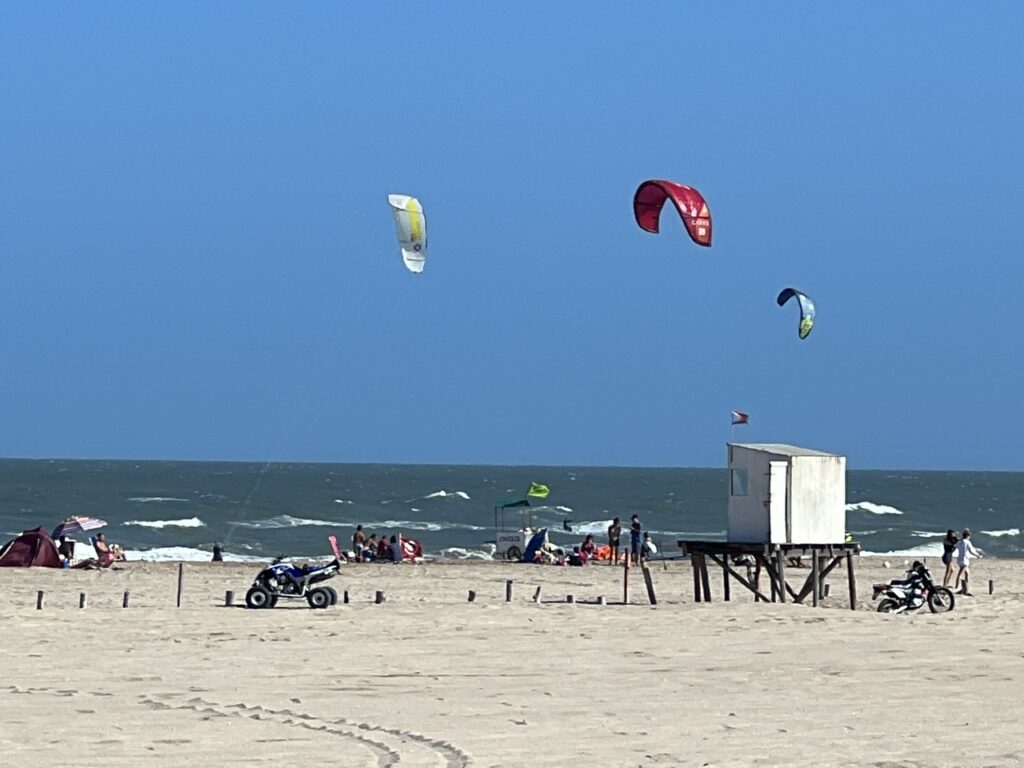
Villa Gesell is a somewhat upscale weekend getaway spot for affluent folks from BA so we expected a nice campsite, a peaceful evening and some nice local cafes. On the latter issue we did fine, on the former – well, it was more of a train wreck ! El Pucara Camping was well recommended and indeed the location was fine right by a nice beach. What we had not counted on was the trail bike/dune buggy/quad convention that seemed to be going on at the time…! That and the usual Friday night shenanigans made for one of the worst nights we have encountered on the trip. The noise ran late – till almost midnight, and then started up again at 4.00 am ! Worse, our immediate camping neighbours ( who had 5 quads ) were some of the worst offenders. We have often surmised that the Argentines either have an incredible tolerance for noise or a basic unwillingness to complain. Surprisingly the campground owners did absolutely nothing about it. Needless to say we beat a hasty retreat the next morning.
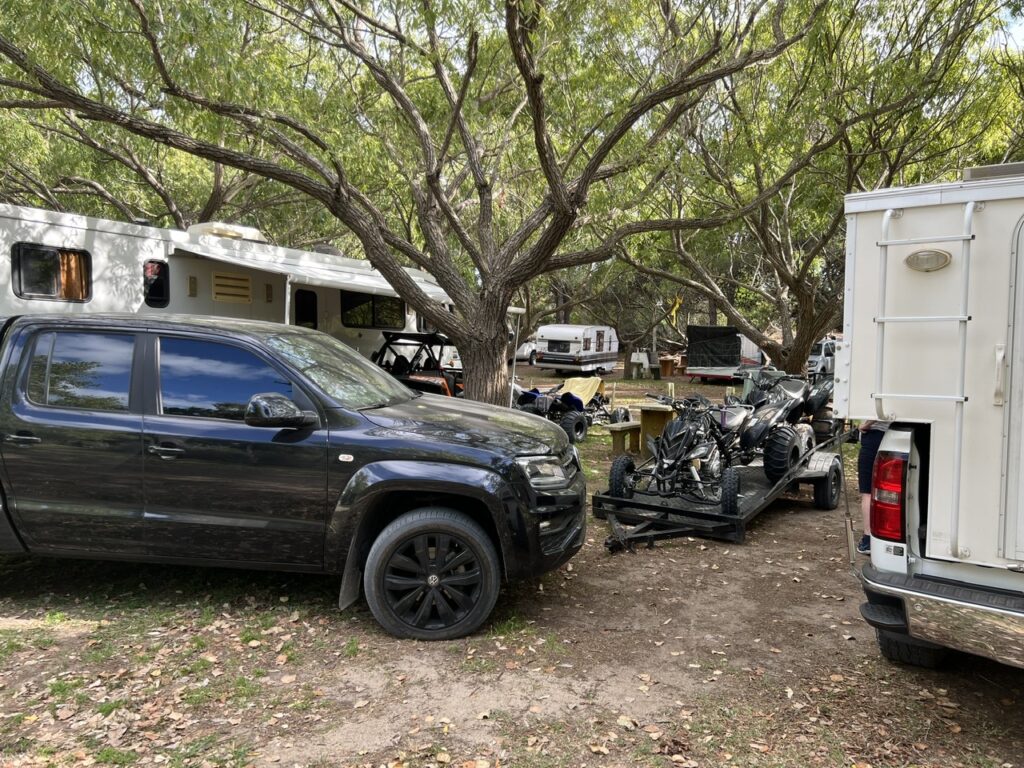
Further up the coast however ( La Costa ), we scored – the campground was excellent, facilities awesome and it was even closer to the ( uncrowded ) beach. Peaceful, with great neighbours, and good privacy – exactly what we had expected. What a difference 50 kms makes. A very pleasant way to spend our last days before heading the Buenos Aires to put our truck on the ship.
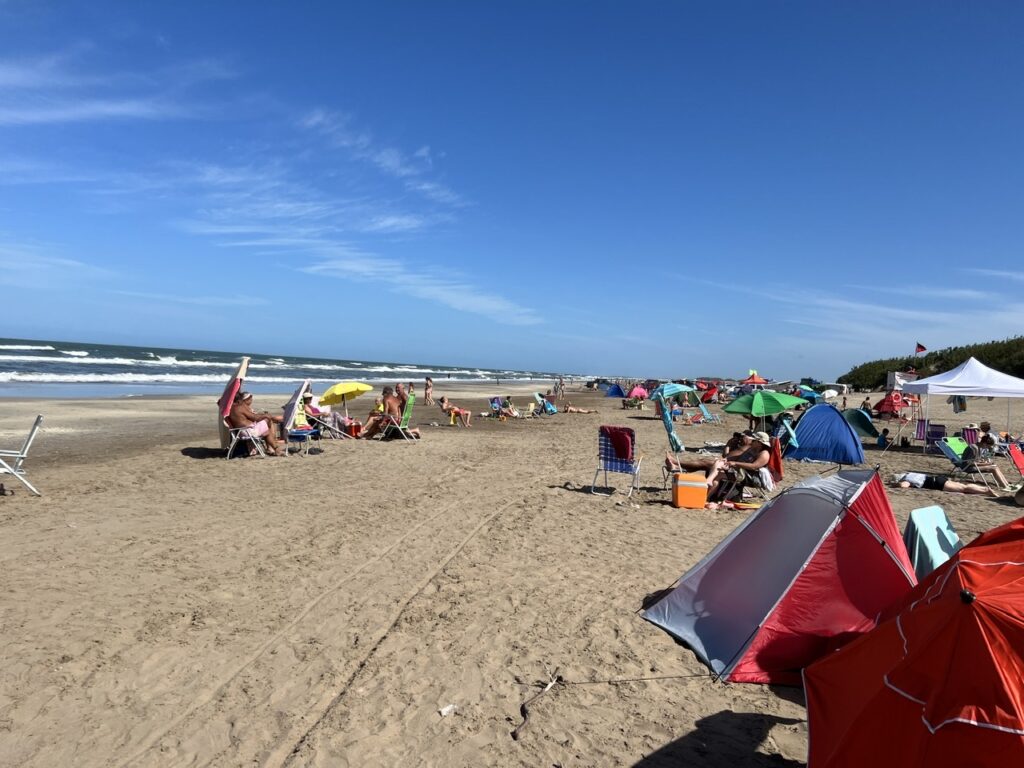
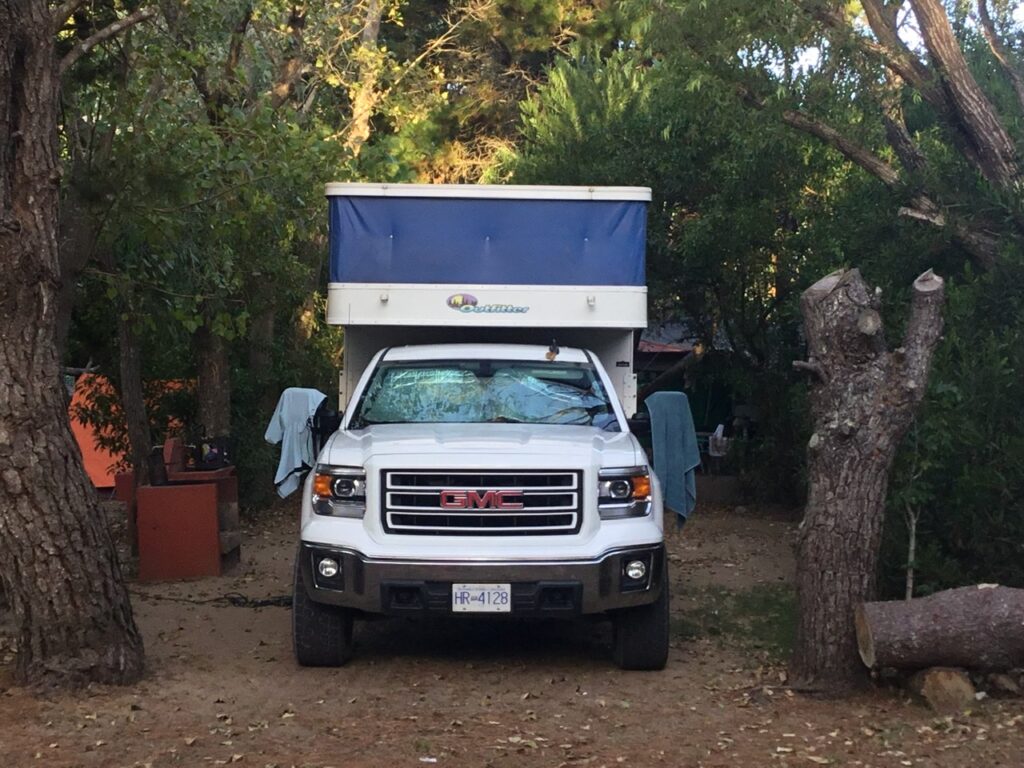
Before getting to BA though we had a few major “chores” as it were – start unpacking the vehicle, give the truck a final thorough wash ( including the rather filthy engine bay ) and purge the propane tank. The former two were quite easy, the latter item took some doing – no one seemed willing to purge it and state in writing that it was purged. Finally we came upon one that would do it, and that happened to have a North American compatible purge valve fitting to actually get the job done. Phew !
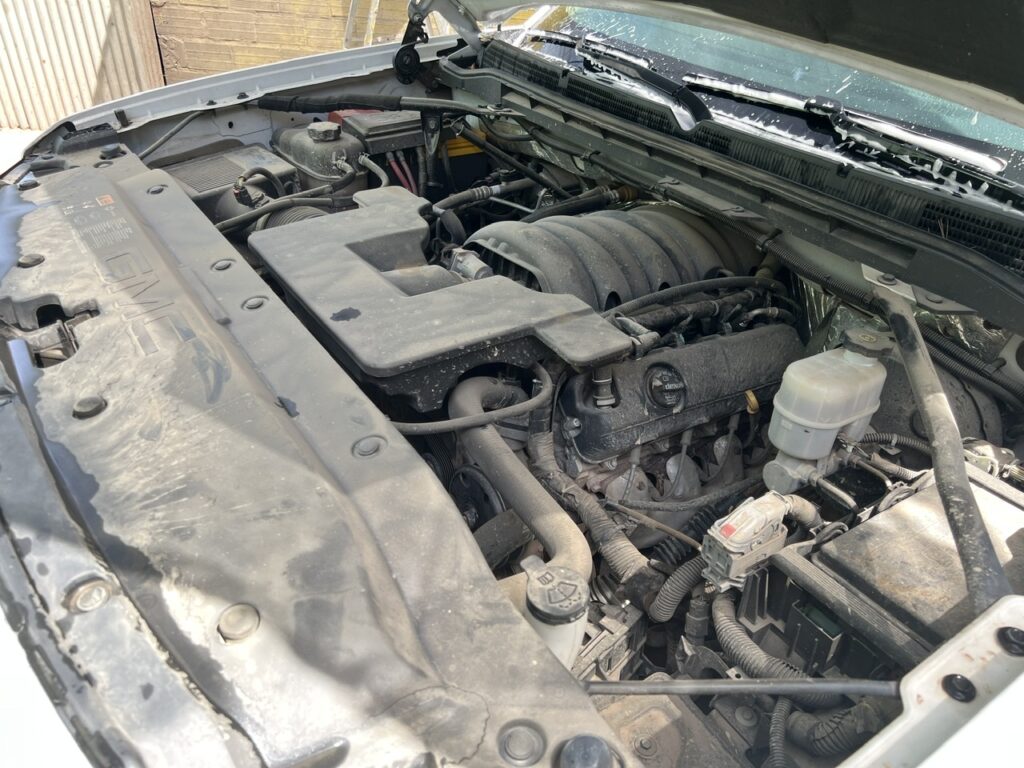
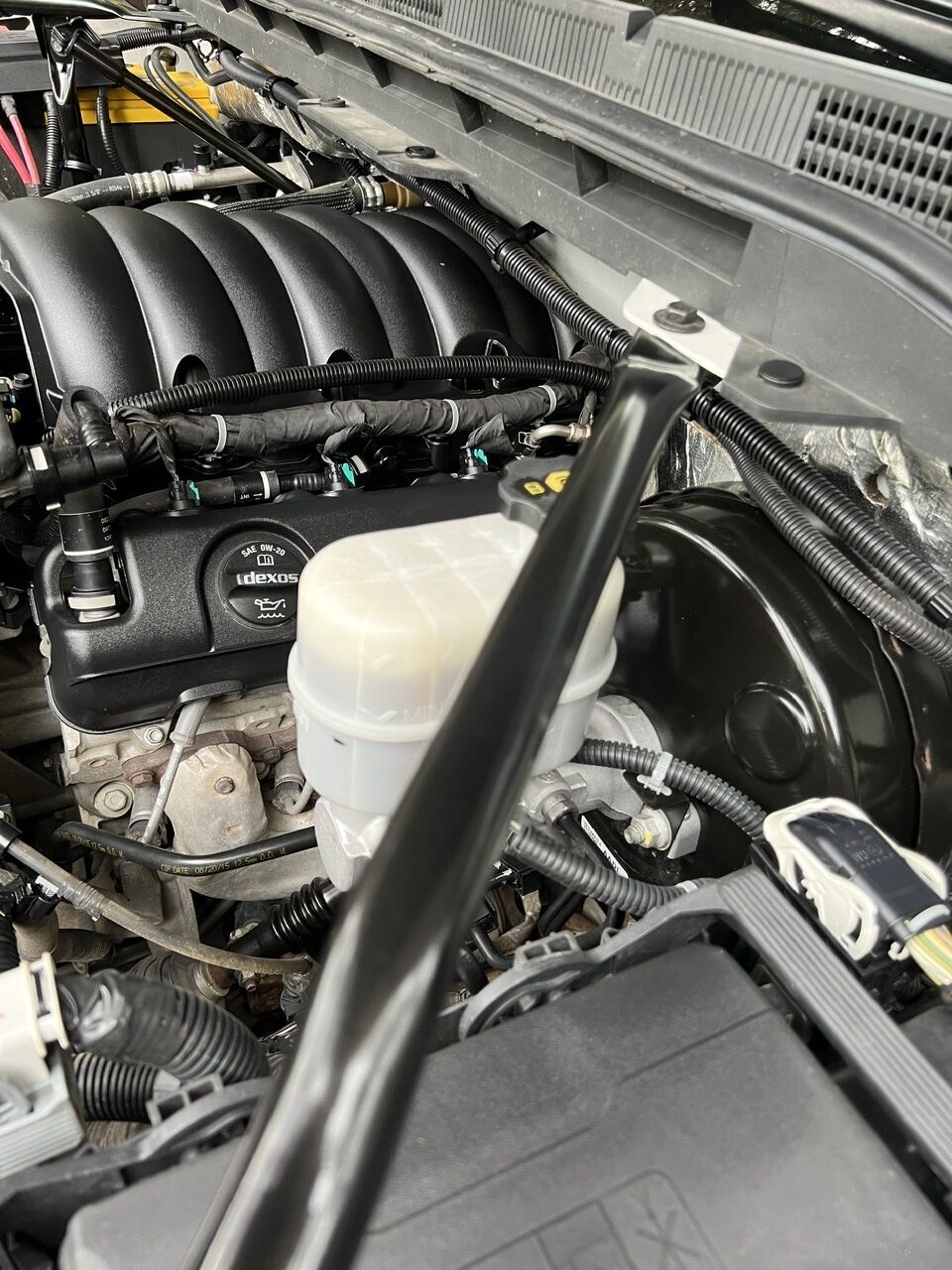
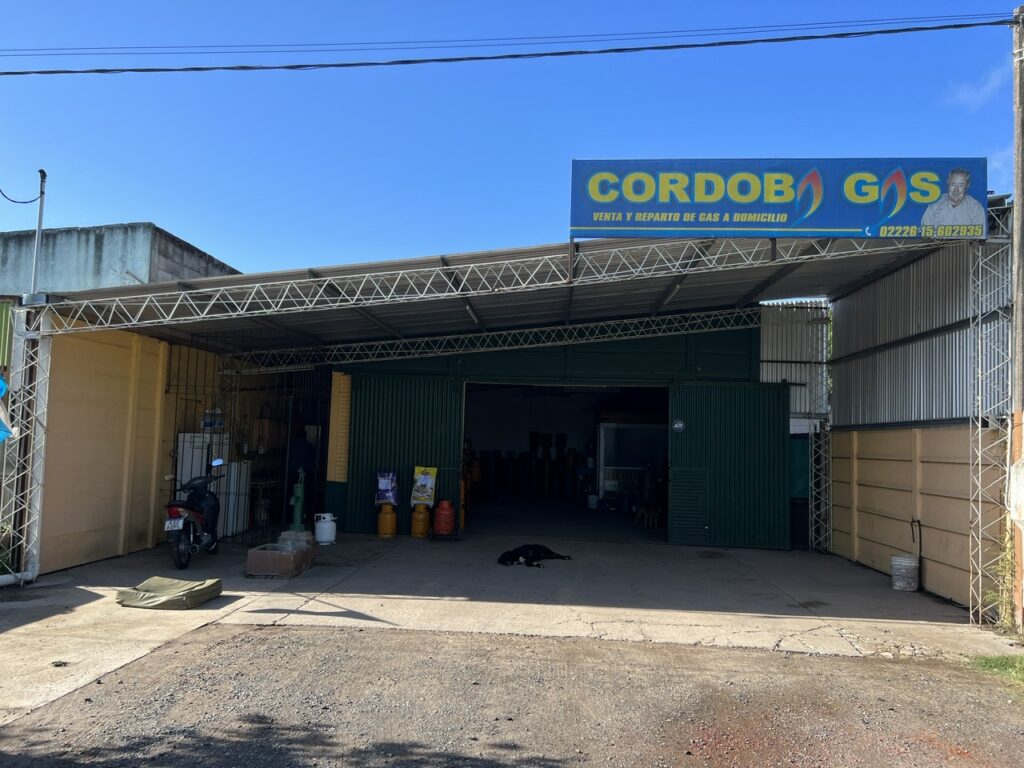
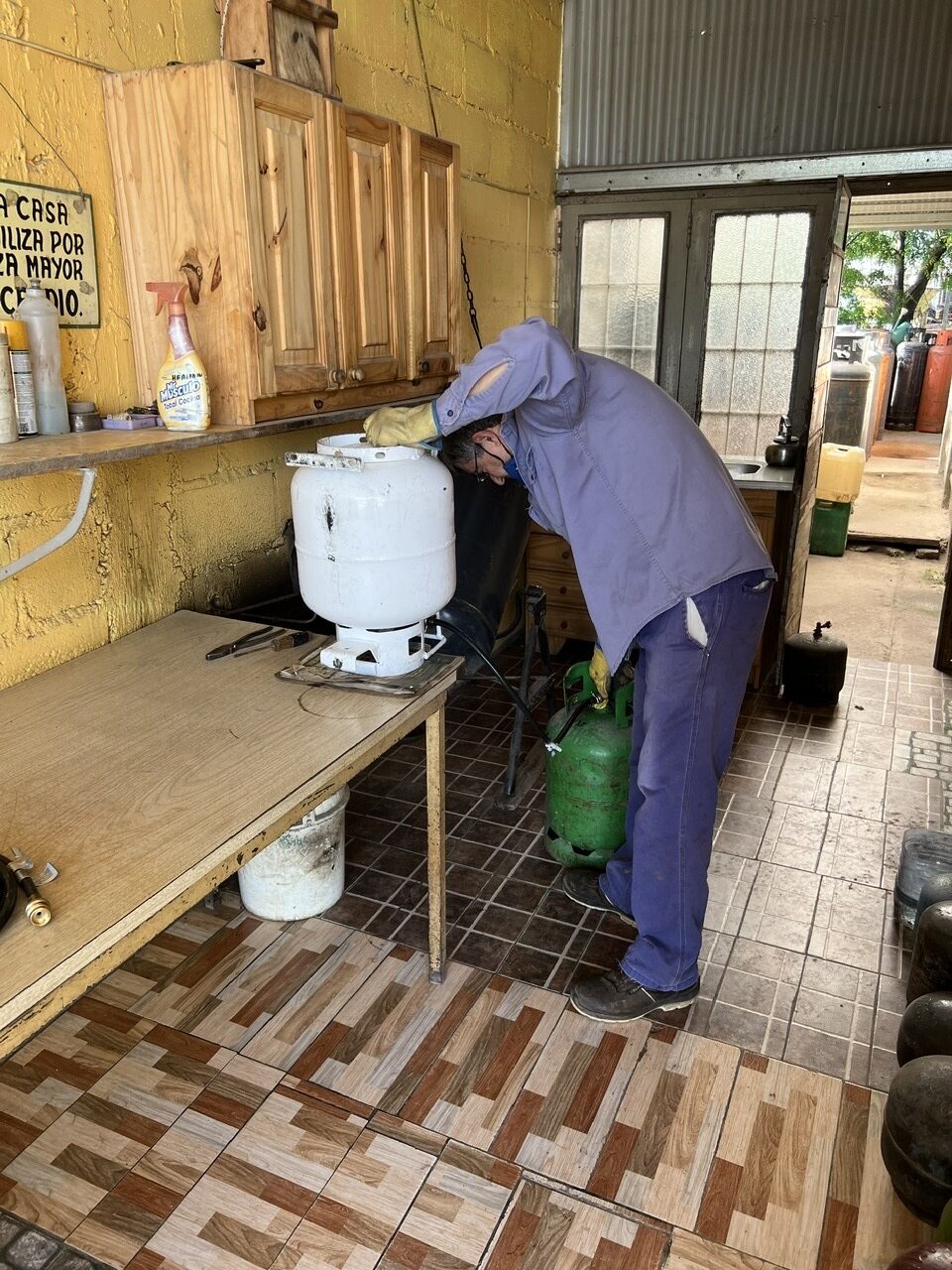
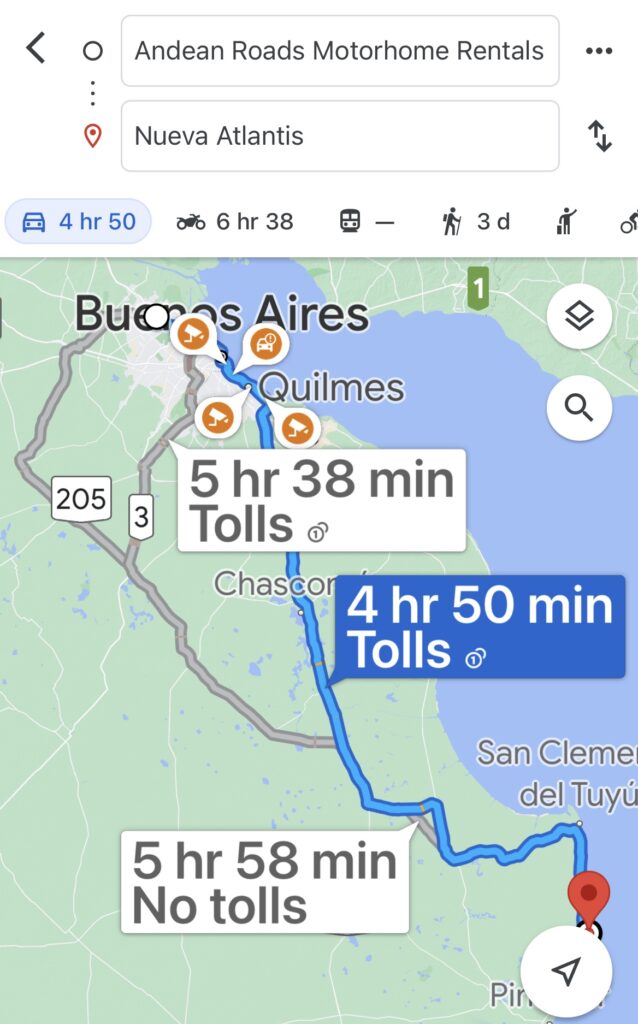
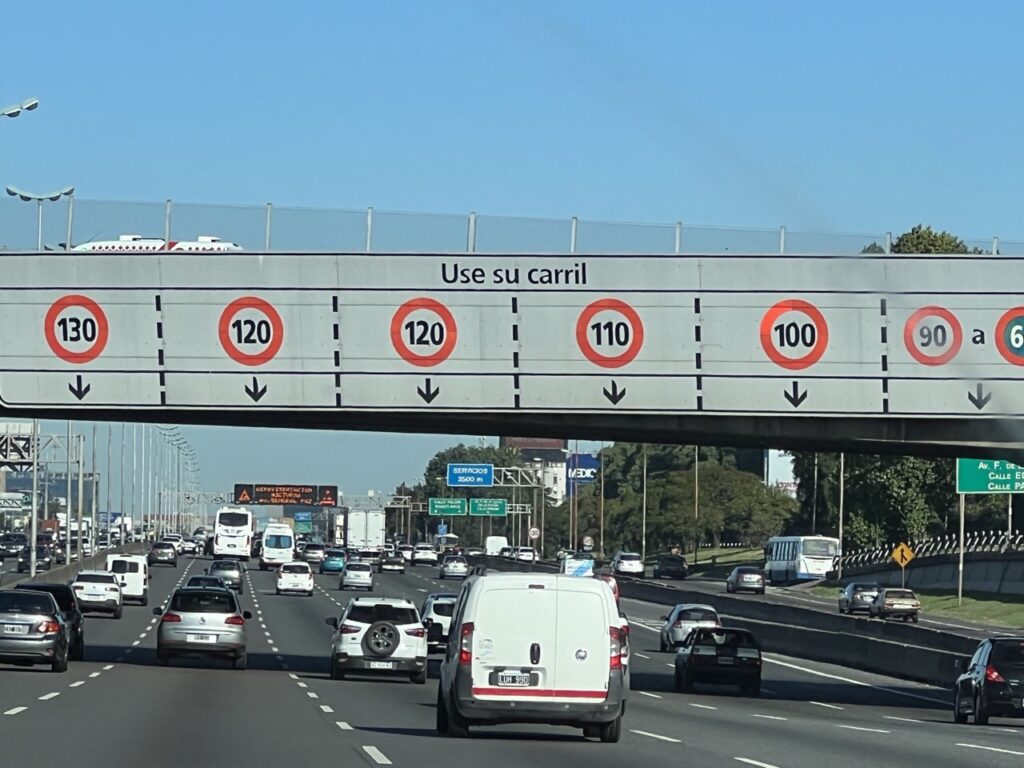
Buenos Aires is big. Actually, 15,000,000 people big… ! That’s about 3 times the size of Sydney or Toronto and ranks right up there with some of Asia’s biggest. Needless to say the thought of driving right through the heart of it (which was the route to our campground suggested by Google Maps ) was, I’ll admit, just a tad intimidating. We‘d handled some of Latin America’s big cities before ( Lima, Guadalajara and La Paz were some of the toughest ) but none this size. Was there possibly an alternate route ? Fortunately yes. Naturally it was somewhat more circuitous, but we managed to safely navigate our way to the Andean Roads campground in Tigre ( a BA suburb ) without any fuss at all. Not even a single wrong turn ( Lois suggested it was all in the navigating 😊).
During our shipping enquires we had crossed ( virtual ) paths with Vincent, a young German, also with a vehicle, who tipped us off to the shipping company that ultimately managed to get us passage for our truck to the US. He had already reached BA and was preparing his rig ( a Sprinter ) for shipping. Our rigs would depart Buenos Aires at the same time ( Feb 28 ), on the same ship, but his would be going all the way to Baltimore whereas we would be meeting our truck in Brunswick, Georgia ( just north of Jacksonville, Florida ).
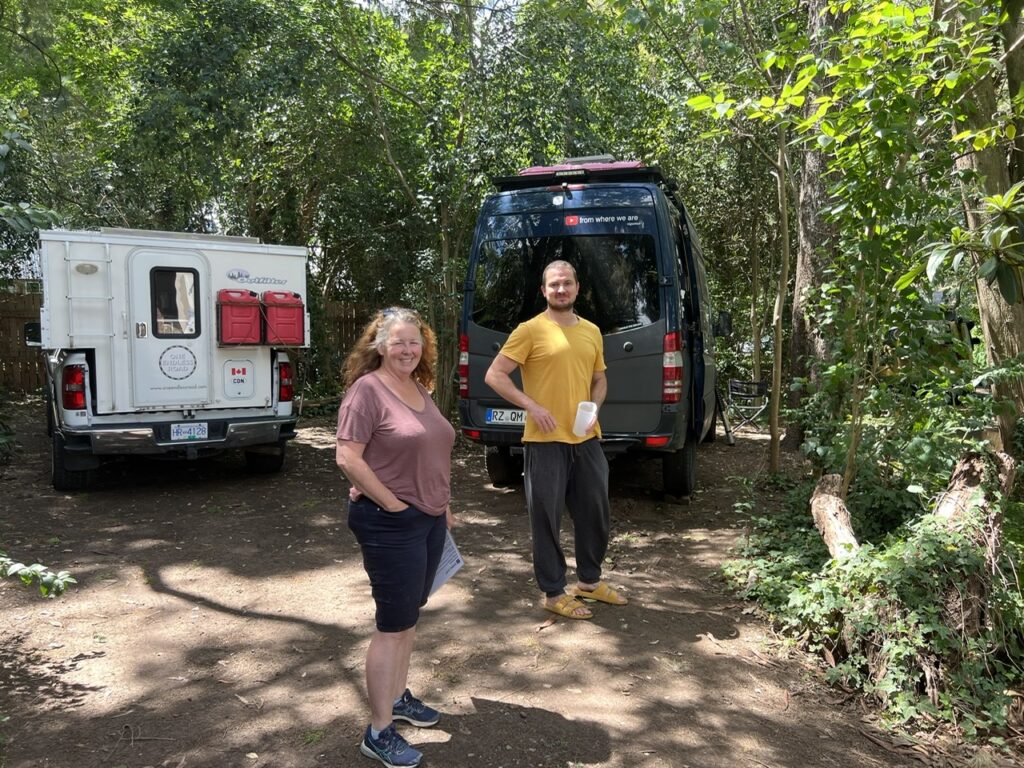
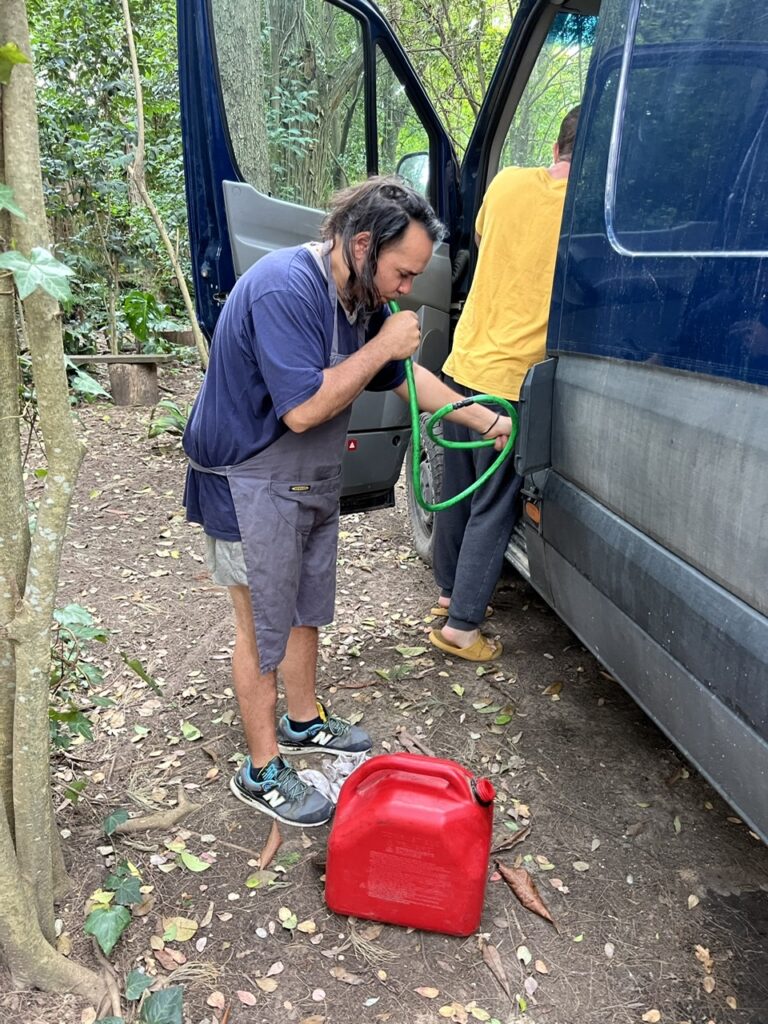
Our time at the Andean Roads campground was enjoyable – it was our last few days with our vehicle and we shared it with Vincent and a Swiss couple, both of whom had actually spent much of the pandemic stuck in South America. Interesting to hear of their experiences here during that time ( we were glad we left ! ).
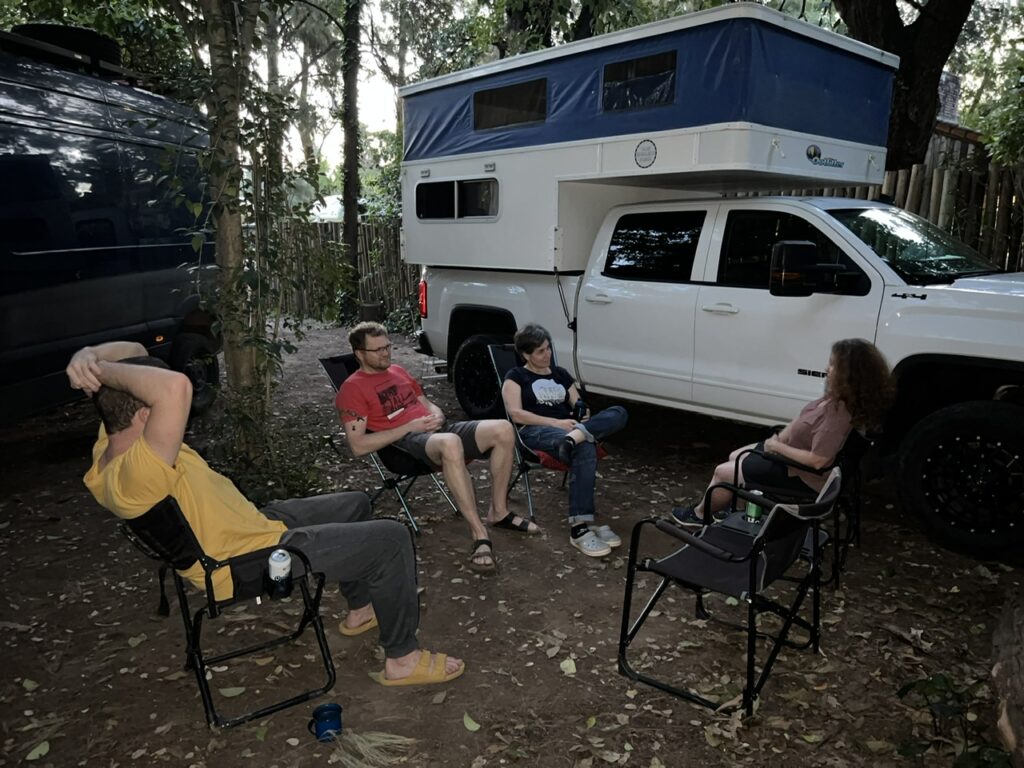
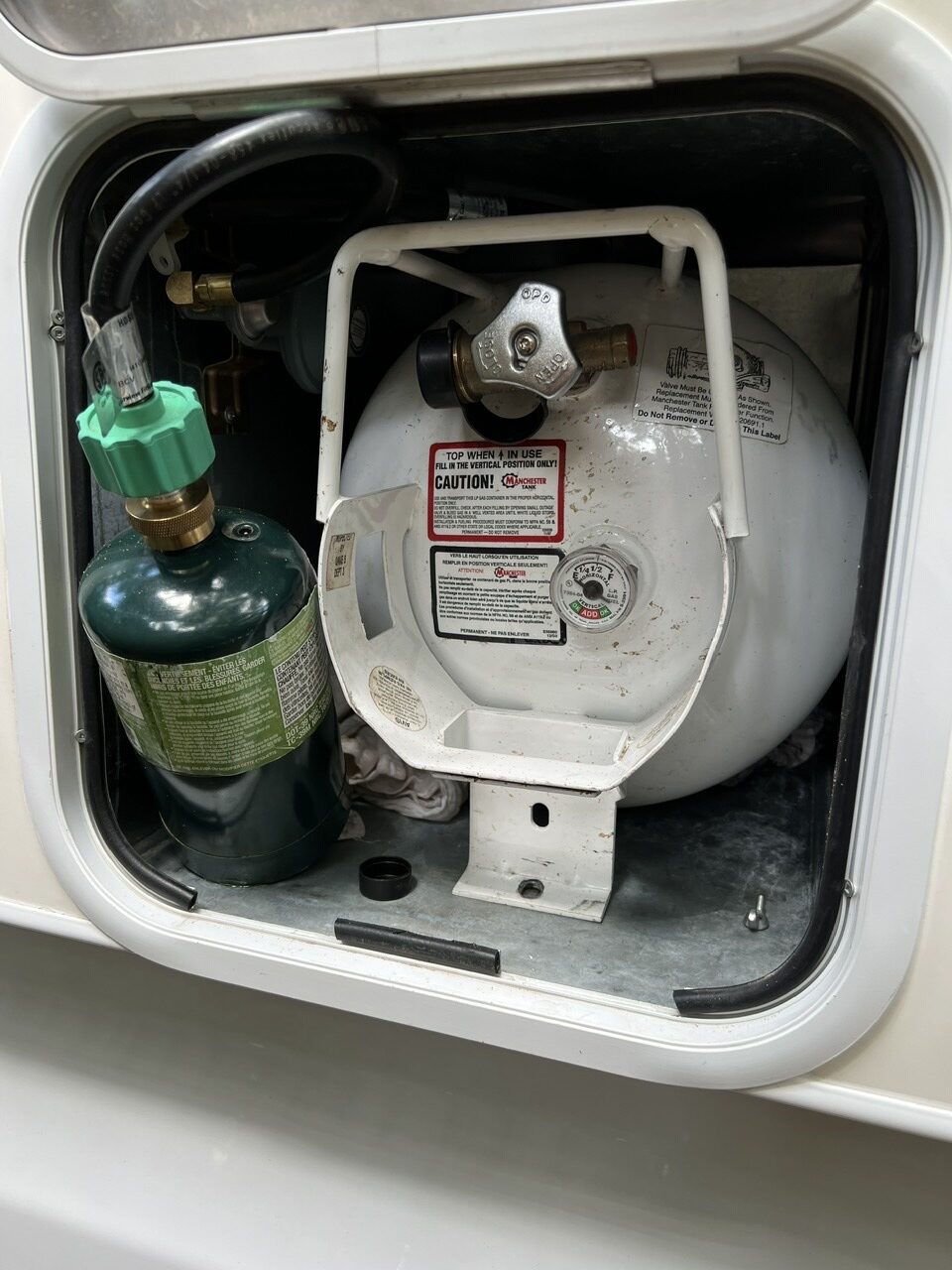
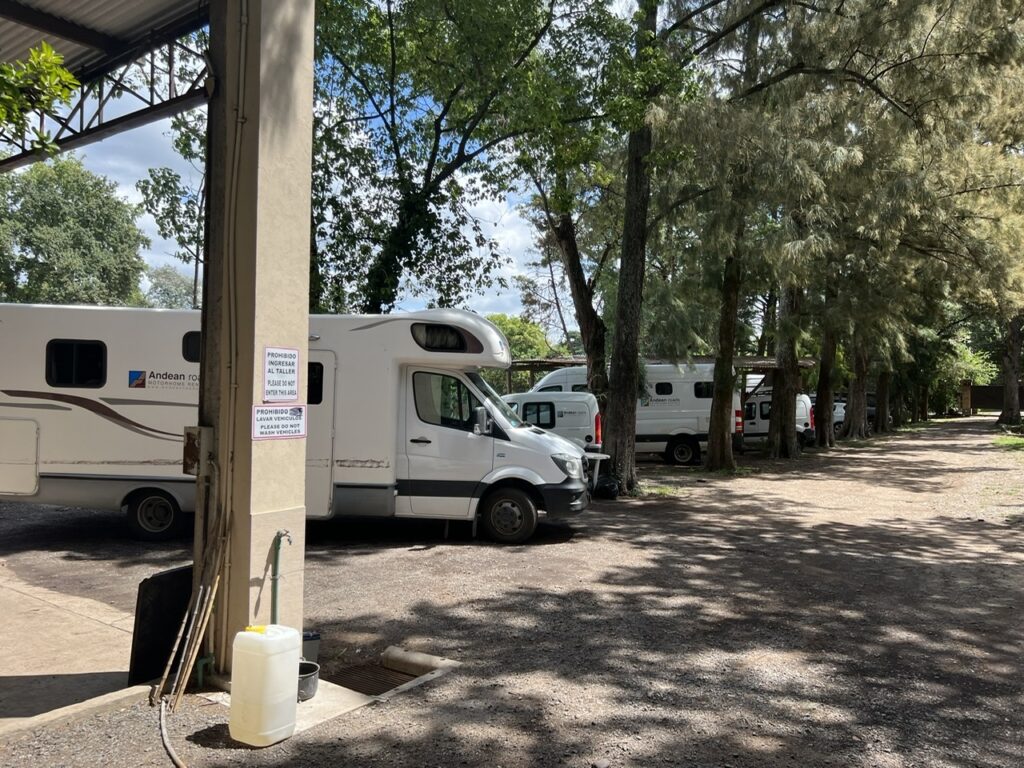
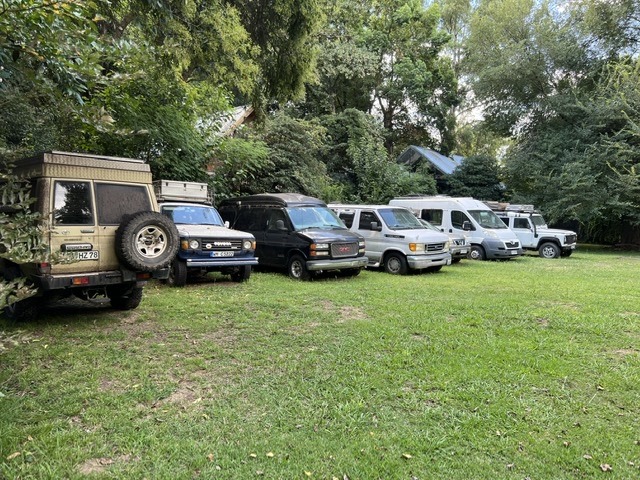
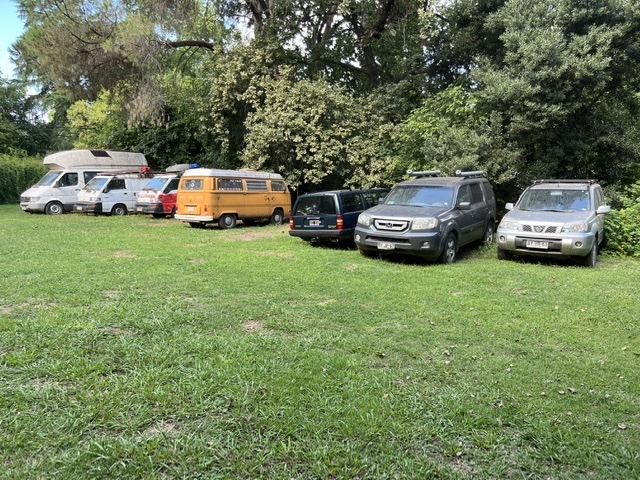
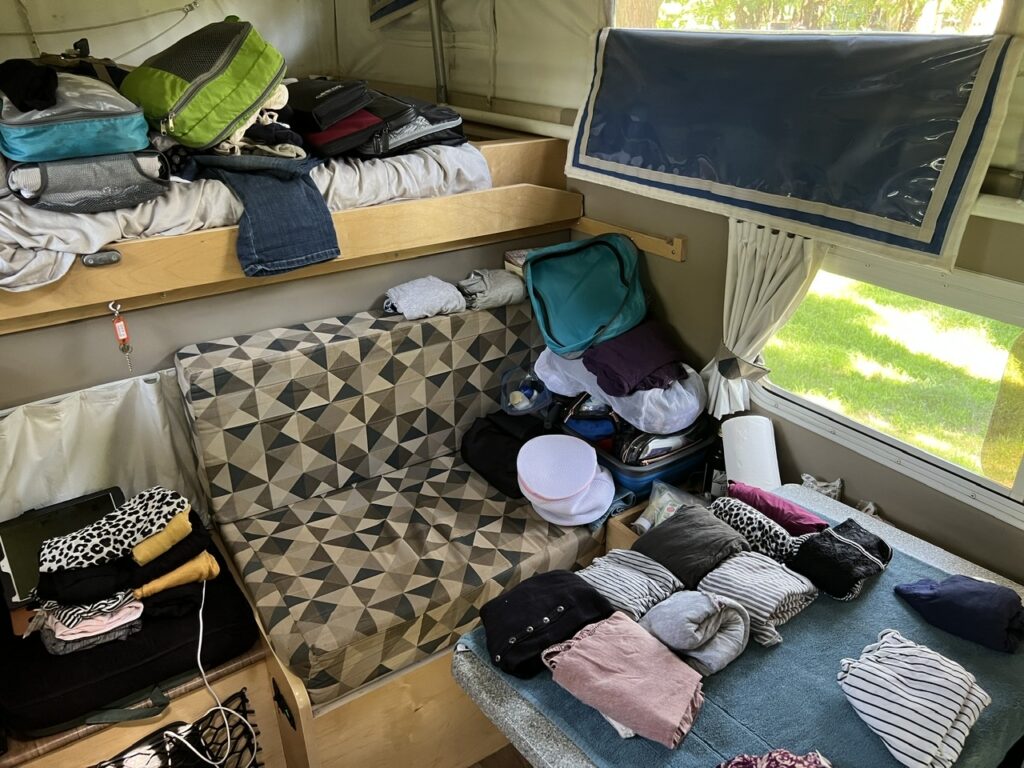
Having spent days unpacking, sorting and re-packing the camper it was finally time to leave Andean Roads and drive to Zarate, the port of Buenos Aires. A good hour’s drive west of BA, the port is massive and is actually on the Parana River, not on the harbor of BA. We’d been warned it would be a long day and indeed it was. Arriving at 10.00 am, we did not leave the port till 4.30. The paperwork, the long waits, the X raying of the vehicles, the customs searches, the dog sniffers….we had it all. Our shipping agent, Francisco, was an invaluable help – could not have navigated the labyrinthine maze of Argentine export procedures without him. It was tedious though all fairly logical- and finally when it was all done we left the port with our customs clearance certificates, and most importantly our amended “TIP” ( temporary import permit ); that’s a document that we will need when we fly out in a few weeks and tells the folks at the airport that the vehicle we brought INTO the country has actually already gone OUT of the country. We were advised not to lose it.
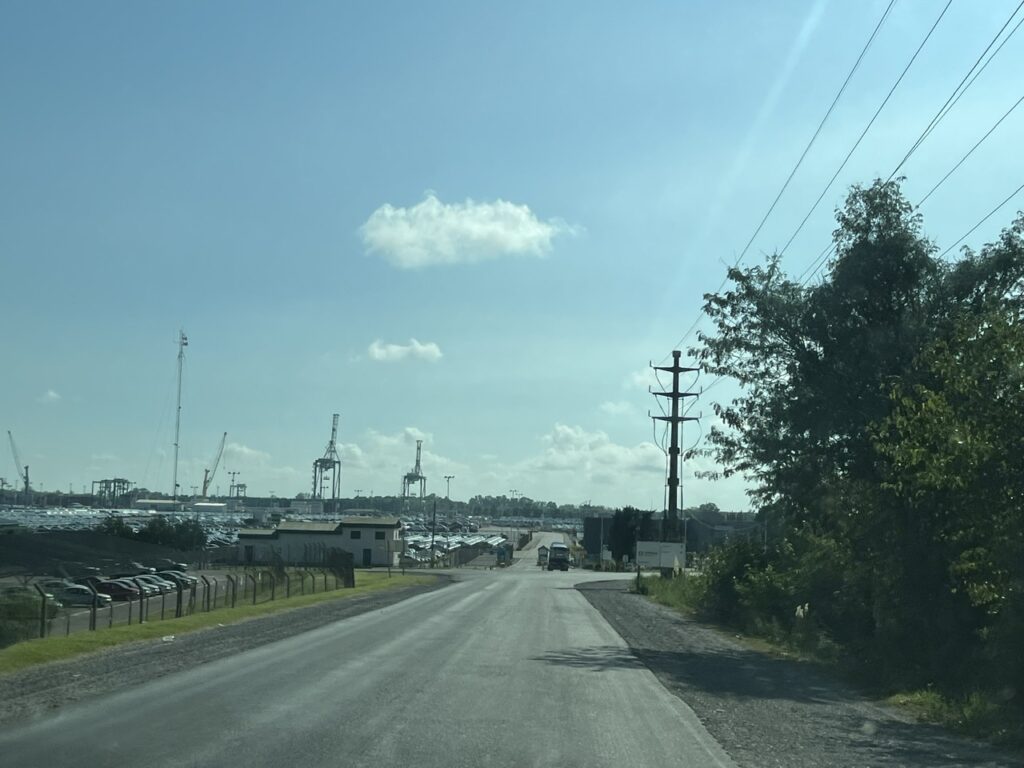
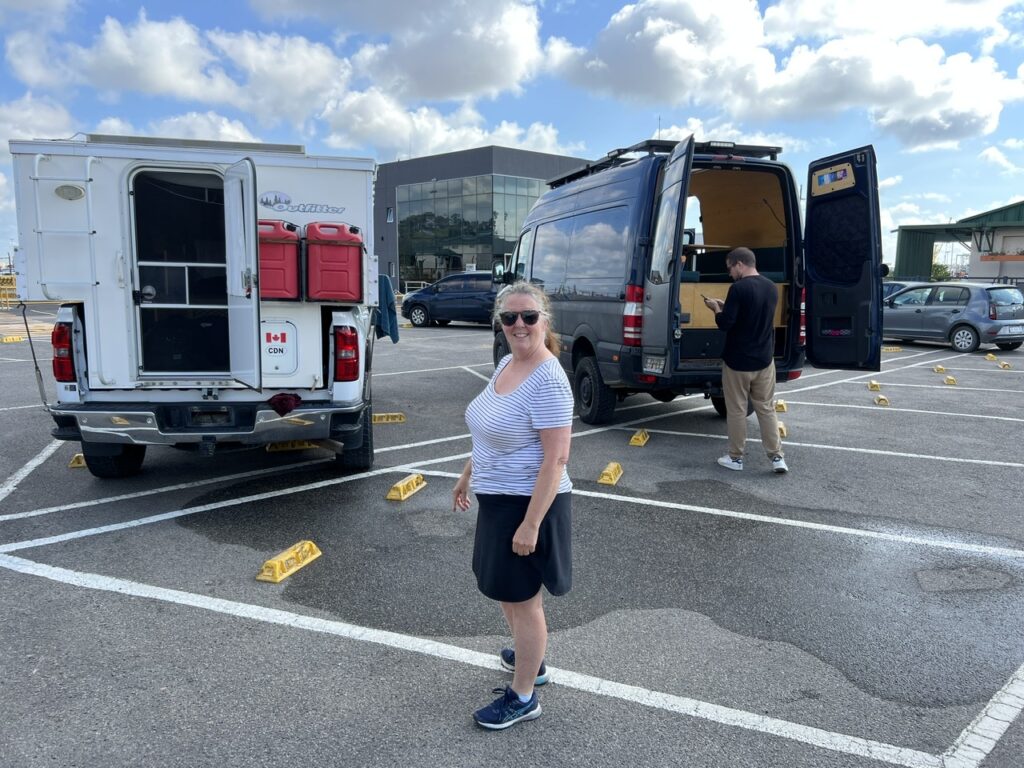
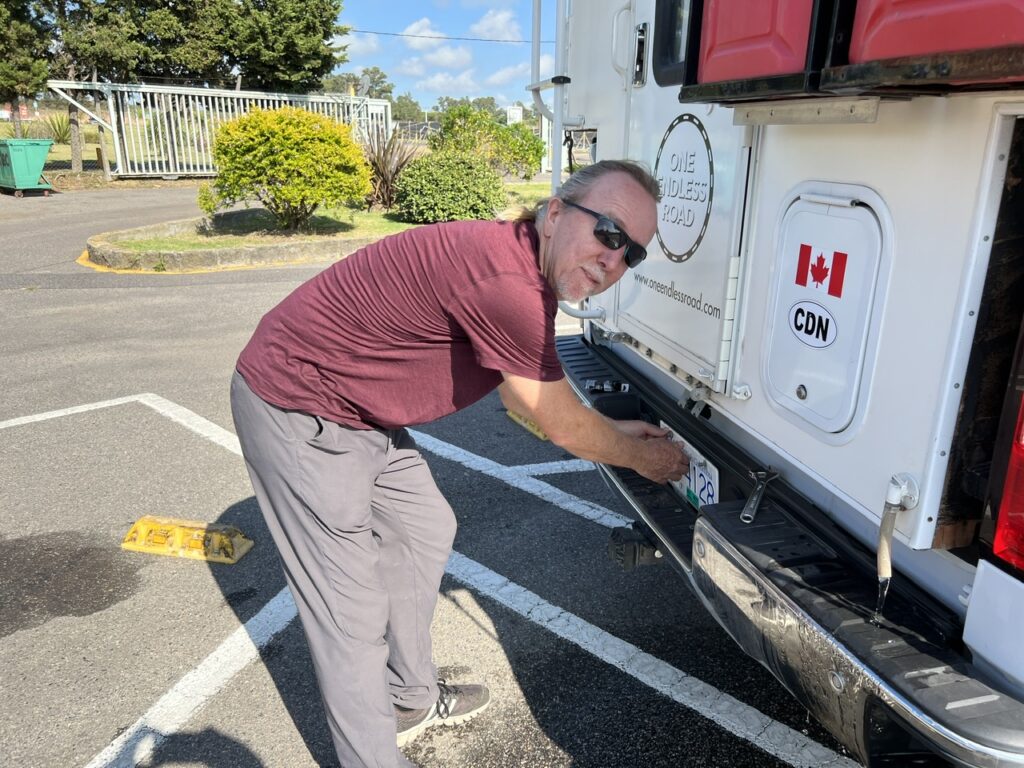
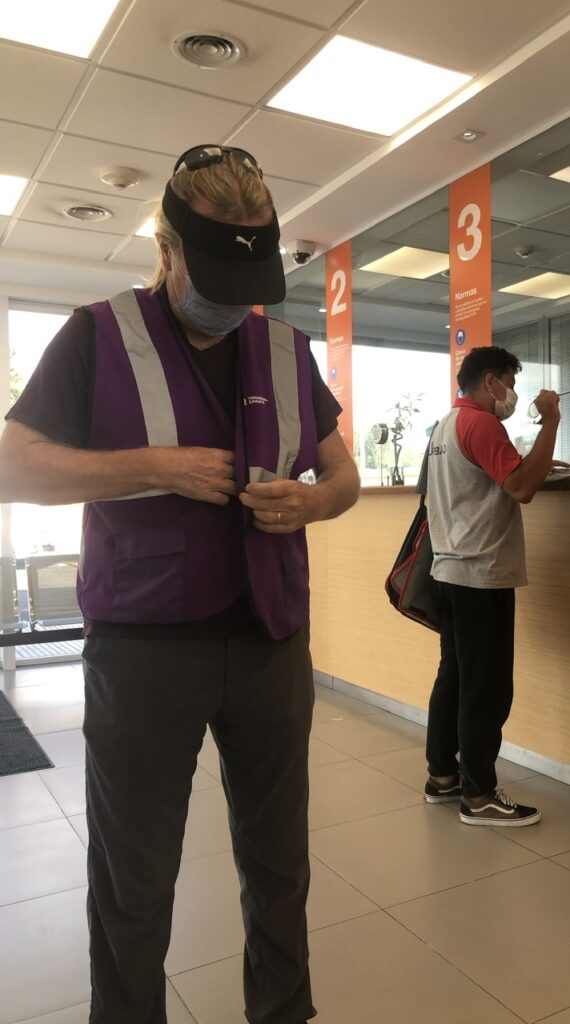
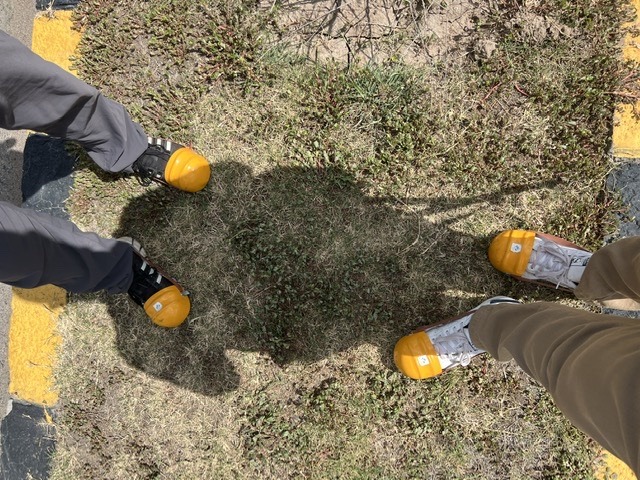
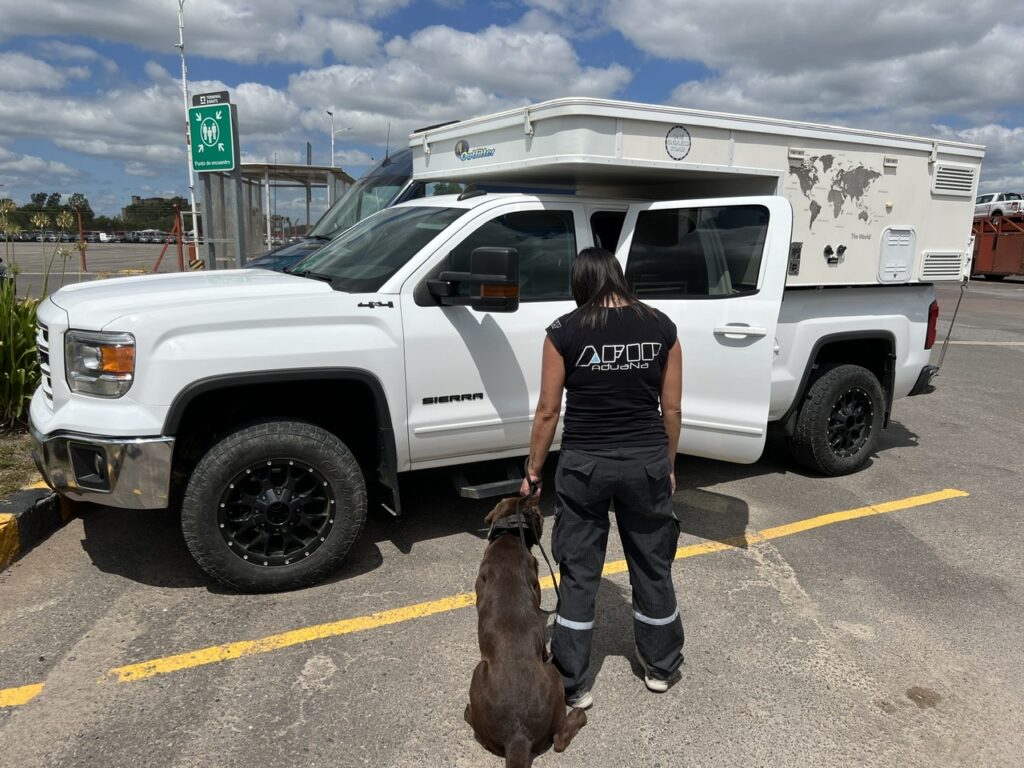
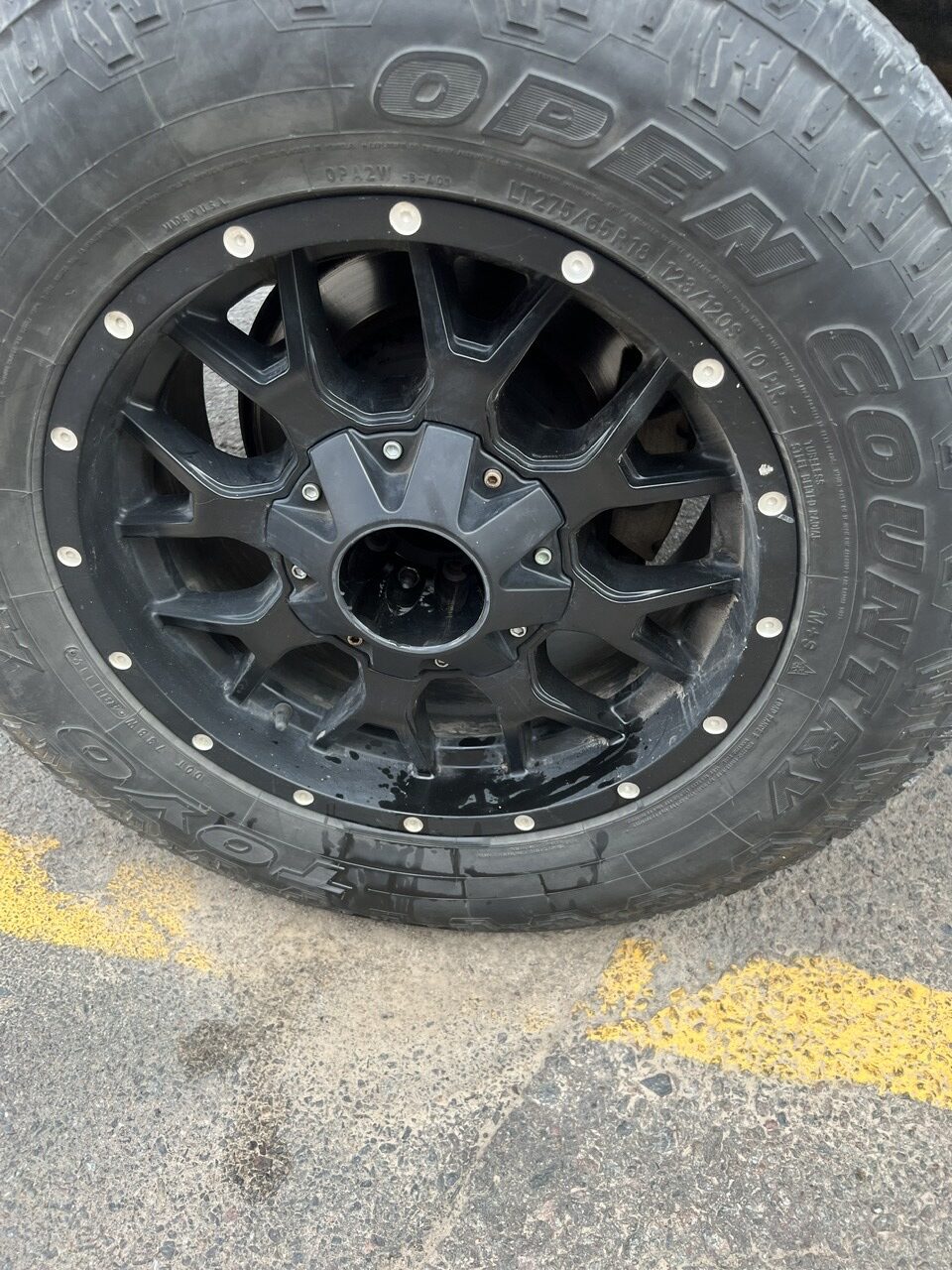
A few observations about the shipping process.
One is supposed to leave with no more than a 1/4 full tank of fuel – both Vincent and I obsessed a bit about this given it’s hard to exactly estimate how much fuel you will use driving to the port. We need not have bothered – no one checked at any point ( so we both lamented not filling up on one last full tank ). We will sorely miss Argentine fuel at less than 50 cents a litre !
One is also sometimes asked to leave portable / removable propane tanks behind and I was very worried about this. If ours was a normal 9kg ( 20lb ) vertical tank that would not have been an issue – they are cheap and widely available in the US. Ours, however, is a rather less common ( and vastly more expensive ) ‘horizontal’ tank which is now, due to COVID supply chain challenges, virtually irreplaceable. Not something we wanted to give up. I’d gone to extraordinary lengths to empty it prior to shipping and to getting certification of such, both of which proved more problematic than I expected. I had finally found a propane guy that could empty it ( it’s otherwise incredibly slow to just burn it off ) and who was willing to give me a receipt saying he had done it – somewhat short of a professional certification but it would suffice. Our tank also had a gauge ( many don’t ) which now showed it as empty and I had filmed and photographed the gas guy doing his thing lest there was any doubt it was totally empty. Turned out that the shipping rep from Wallenius ( who usually checks for dangerous goods and potentially explosive materials ) never appeared at the port but instead accepted the customs folks’ verification that there was nothing dangerous in the camper ( they had looked, seen the tank was totally empty and were happy with that).
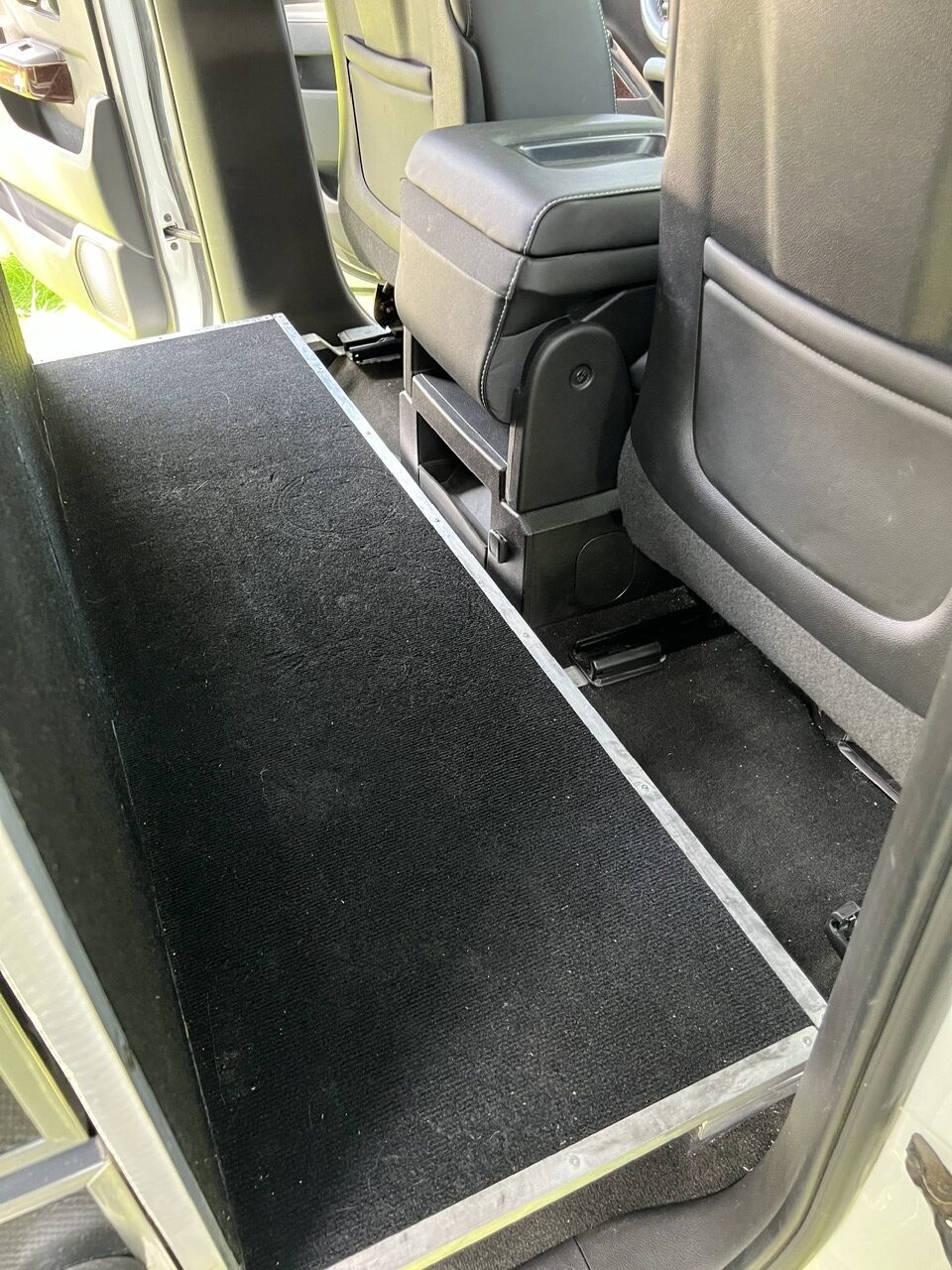
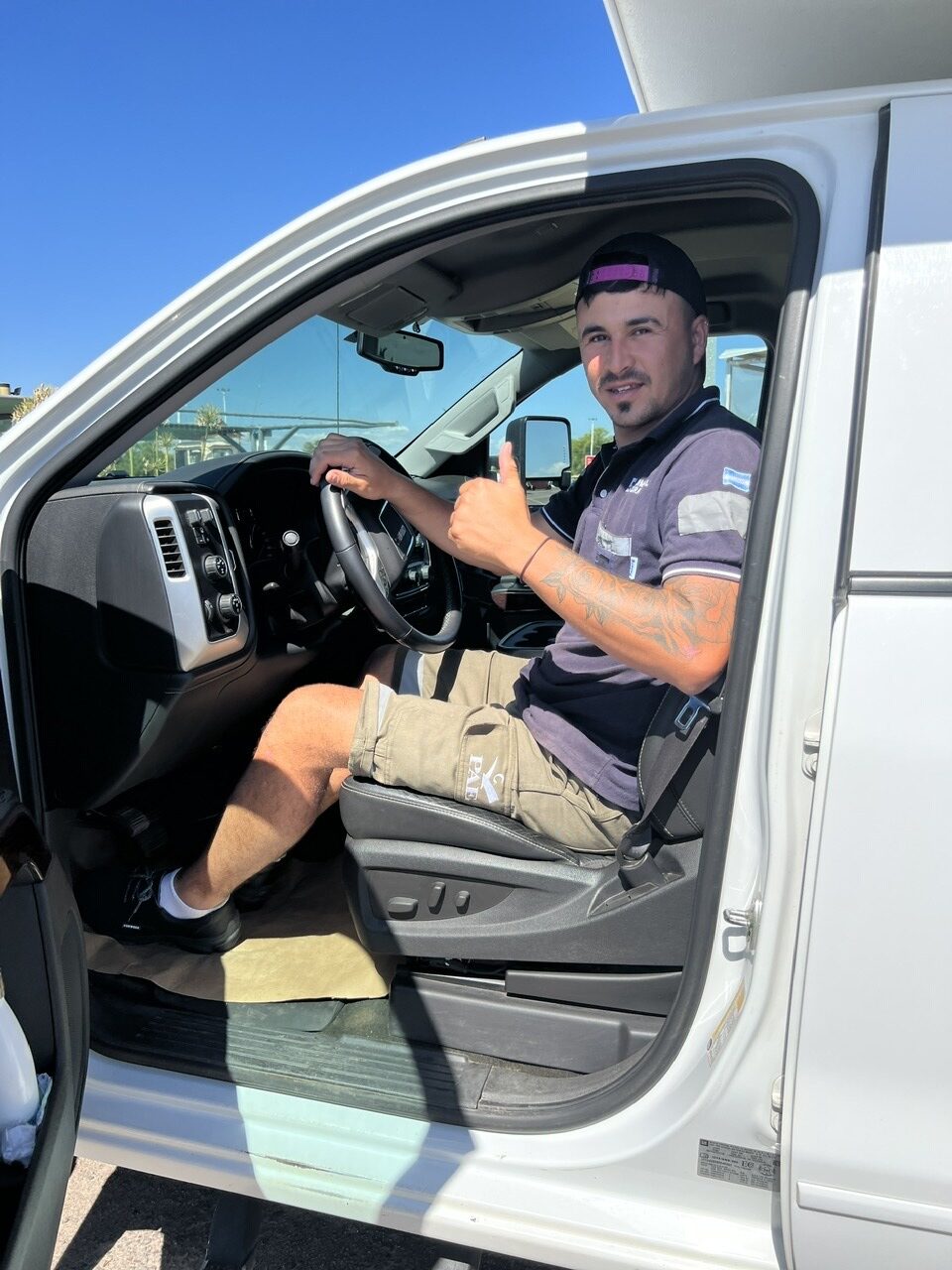
The shipping cost has three components : port charges in Argentina, the shipping ( freight ) cost itself, and then port charges in the US where we pick up the camper. Following the port process on Wednesday we visited the Argentine agent’s offices in downtown BA the next day to pay them. All went smoothly. Once the ship is underway our global shipping agent ( from Germany ) will bill us for the freight component. We pay the US fees when the ship docks in the US before we get the truck back. Curiously, you pay nothing up front – no deposit even. Different than shipping by container. That said, It’s a pretty watertight process for these guys – you don’t pay, you don’t get your cargo !
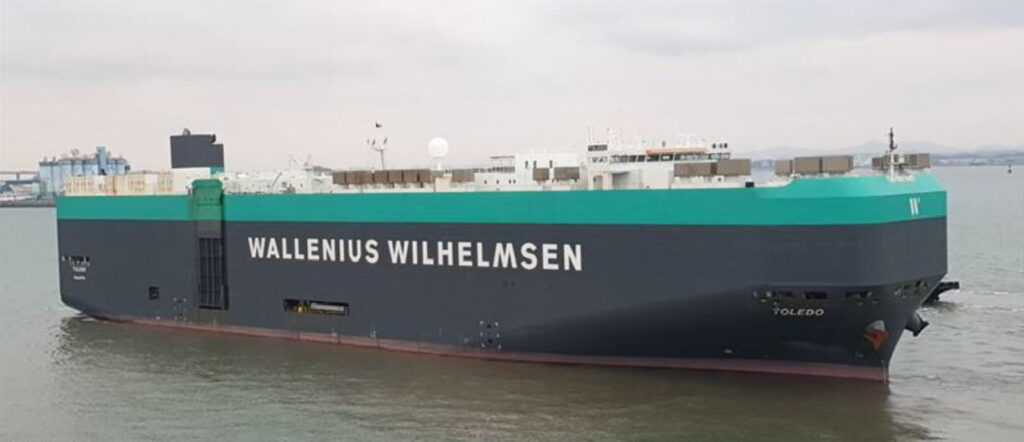
So now we have a few weeks to enjoy Buenos Aires ( and hopefully Uruguay ) before we leave for the USA ourselves. Following a little separation anxiety as they drove our truck away at the port, we checked into a nice downtown Buenos Aires hotel. We’ll certainly miss the freedom of having ‘wheels’ but will also appreciate the comforts of a hotel – the simple things like bathrooms WITH toilet paper, toilets WITH toilet seats, and showers that run CONSISTENTLY hot ( none of which can be assumed in a South American campground ! ). Of course we’ll still have to throw used toilet paper in the waste bins provided ( a standard process in EVERY Latin American country) – one of the things here I think we’ll just never get used to !

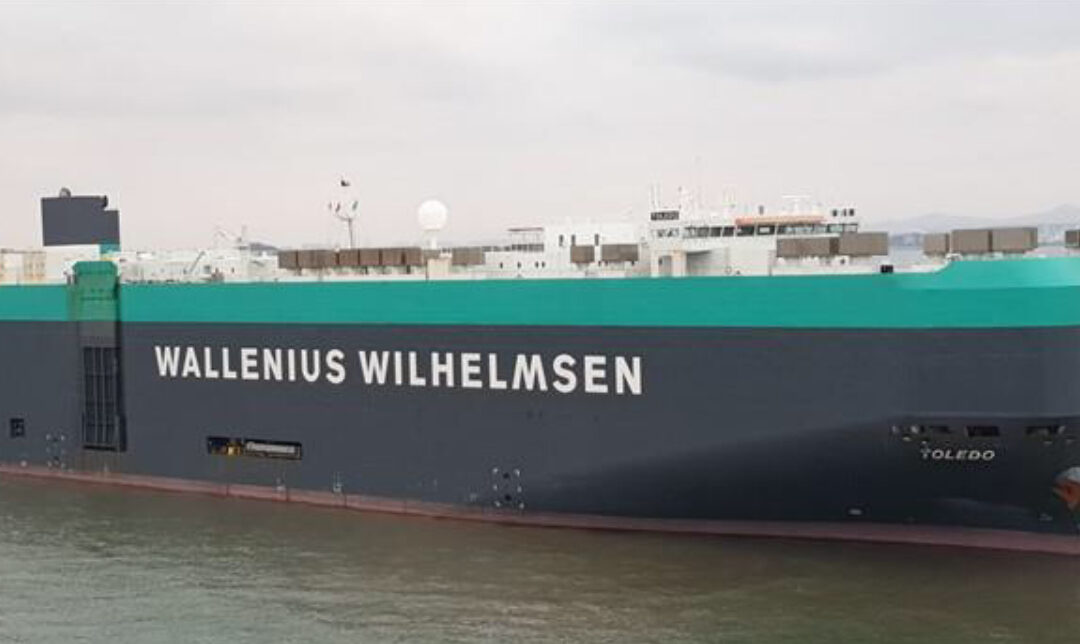
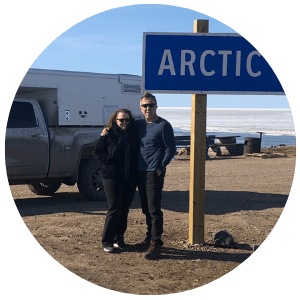
I have enjoyed your your journey since I logged in some time ago. I envy you being able to see South America.
We live near Winnipeg, Manitoba.
We have had a long cold winter with temps down to -35c and lots of snow.
We wish you a safe journey home.
Hi Bert,
Thanks for continuing to follow along. I know it’s been a tough winter in Manitoba, hopefully it warms up for you soon !
We are near WINNIPEG as well…what an amazing trip these guys had!!!
Thanks Danielle – but sadly nearing the end of it 🙁
Thank you for sharing all your travels. We had to leave Montevideo earlier than planned due to emergency at home. Montevideo has some nice beaches a short bus ride out of town. By the way you can drink the tap water in Uruguay and you can flush toilet paper ! Safe travels home !
We enjoy sharing them ! Too bad you had to leave early and sorry about the emergency from home. Appreciate the Uruguay tips and yes, will be nice to flush toilet paper as normal once again 😊😊 !
Did you get any new ideas from Vincent’s sprinter van?
Good question Chris ! His is the short wheelbase ( ours is longer ) and he went with a substantially different fundamental design, so no real design ideas we could use ( and we are past the point of changing anyway ) but he did share some great information regarding living in a van versus a camper. Super interesting guy…!
Another interesting read…Wow! The process of shipping your vehicle!
Enjoy BA! We look forward to your next update!
Stay safe
Ed and Mae
And a bit stressful, too ! One of those things you are glad to have over and done with ( mind you, we are not done yet – still have to get it safely to the US ! ).
Mae, just curious….you have Gmail so I am just wondering if you got the subscriber reminder ( as usual ) or if you had to go to the website directly to get the newest post ? I ask because, for about 3 weeks now almost all the subscribers who use Gmail have NOT been getting the weekly notification. Let me know if you could, thanks !
A notification came in through Gmail this morning just like it used to.
That is good to hear Don, thanks for the heads up. Seems the “@Gmail.com” distribution problem we had for a few weeks may have resolved itself ? I have had a few others say the same thing. Cheers,
Jeff
Fascinating chapters each week. Very impressed with your growing range of skills!
Keep safe Jeffand Lois.
Hi Sue !
Well if navigating the intricacies of a foreign port is a skill perhaps it’s one we have learned although the primary requirement is patience – something, as a rule, I don’t have in abundance ( Lol )! We hope to get to Australia later this year – if we get there let’s do another lunch at your preferred pub in Parkes !
Well done both of you. Have followed every km of your trip with envy and enjoyed all your adventures. Stay safe.
Hi Garth !
Well, not quite “done” yet…..our trusty rig has a little boat ride to complete and then a final jaunt across the US before we are “home”. Look forward to a beer with you when we get there…!
We enjoyed your journey so very much. Would have loved to do that sometime. Thanks for sharing.
Glad you have enjoyed it. We’ll continue the blog till we get back to Kelowna which we estimate to be mid April.
Hi Abe,
Never too late !
Hey Jeff and Lois, we have some family friends in Buenos Aires that would likely be happy to connect with you two if you were up to it. Big families and familiar with all the city has to offer.
Hi Norm ! I will send you a message directly. Cheers
What shipping company did you use? We have been referred to “Seabridge” but having no luck getting a quote.
My wife and I (Canadian) did almost the exact trip 8 years ago on two motorcycles. Continued to do much of Africa and 38 countries in Europe. Considering doing Central/South America again in a 19’8” long high roof Promaster. Two wheel drive but home built without tanks hanging.
Hi Peter,
We also used Seabridge ( Uschi ). We had no issue getting quotes and so far so good to deal with – waiting to get our rig next week so perhaps I should hold further comment till then !
The van sounds good, they of course offer some advantages over a truck camper, the biggest ( I think ) being the walk through option. The two wheel drive won’t slow you down, we hardly ever put ours in 4×4 to be honest. When are you planning to go ?